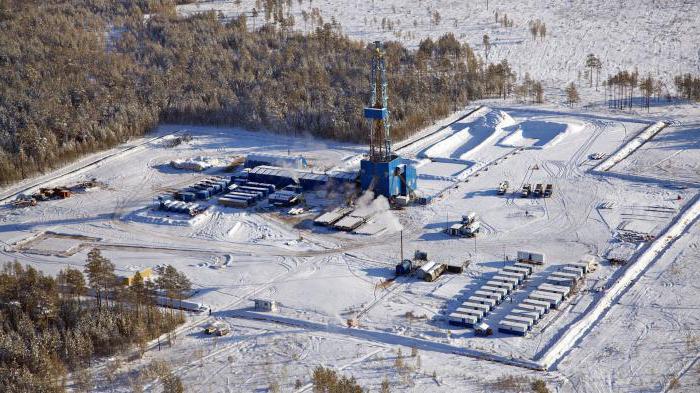Dynamic viscosity of a liquid. What is its physical and mechanical meaning?
The fluid is defined as a physical body,It is capable of changing its shape with an arbitrarily small influence on it. Usually two main types of liquids are distinguished: drip and gaseous. Drip fluids are liquids in the usual sense: water, kerosene, oil, oil and so on. Gaseous liquids are gases which under normal conditions are, for example, gaseous substances, such as air, nitrogen, propane, oxygen.
These substances differ in molecularstructure and type of interaction of molecules with each other. However, from the point of view of mechanics, they are continuous media. And due to this, for them some common mechanical characteristics are defined: density and specific gravity; and also the basic physical properties: compressibility, temperature expansion, tensile strength, surface tension forces and viscosity.
By viscosity we mean the property of a liquid substanceTo resist slip or shear of its layers with respect to each other. The essence of this concept consists in the appearance of a frictional force between the various layers inside the fluid in their relative motion. Distinguish between the concepts of "dynamic viscosity of a liquid" and its "kinetic viscosity". Next, let us consider in more detail what is the difference between these concepts.
Basic concepts and dimension
The internal friction force F arising betweenmoving relative to each other adjacent layers of the generalized fluid, is directly proportional to the velocity of the layers and their contact area S. This force acts in a direction perpendicular to the motion and is analytically expressed by the Newton equation
F = μS (ΔV) / (Δn),
where (ΔV) / (Δn) = GV is the velocity gradient in the direction of the normal to the moving layers.
The proportionality coefficient μ is the dynamic viscosity or simply the viscosity of the generalized fluid. From Newton's equation it is equal to
μ = F / (S ∙ GV).
In a physical measuring system, a unit of viscosityis defined as the viscosity of the medium in which, for a unit velocity gradient GV = 1 cm / sec, a friction force of 1 dyne acts on each square centimeter of the layer. Correspondingly, the unit dimension in a given system is expressed in dyn ∙ sec ∙ cm ^ (-2) = r ∙ cm ^ (-1) ∙ sec ^ (-1).
This unit of dynamic viscosity is called poise (P).
1 P = 0.1 Pa ∙ s = 0.0102 kgf ∙ s ∙ m ^ (- 2).
Smaller units are also used, namely: 1 P = 100 cps (centipoise) = 1000 mP (millipose) = 1000000 mc (microimpase). In the technical system, for the unit of viscosity, take the value kgs ∙ s ∙ m ^ (- 2).
In the international system, the viscosity unitis defined as the viscosity of the medium in which a frictional force of 1 N (newton) acts on each square meter of the liquid layer at a single velocity gradient GV = 1 m / s per 1 m. The dimension of the value of μ in the SI system is expressed in kg ∙ m ^ (-1) ∙ c ^ (-1).
In addition to such characteristics as dynamicviscosity, for liquids, the concept of kinematic viscosity is introduced as the ratio of the coefficient μ to the density of the liquid. The value of the coefficient of kinematic viscosity is measured in Stokes (Ist = 1 cm2 (2) / s).
The viscosity coefficient is numerically equal to the numberof the motion transported in a moving gas per unit time in a direction perpendicular to the motion, per unit area, when the velocity of motion differs per unit velocity in the gas layers spaced per unit length. The viscosity coefficient depends on the kind and state of the substance (temperature and pressure).
Dynamic viscosity and kinematic viscosityliquids and gases are highly temperature dependent. It was noted that both these coefficients decrease with increasing temperature for dropping liquids and, conversely, increase with increasing temperature for gases. The difference of this dependence can be explained by the physical nature of the interaction of molecules in dropping liquids and gases.
Physical sense
From the point of view of the molecular-kinetic theory,the phenomenon of viscosity for gases lies in the fact that in the moving medium, due to the chaotic motion of molecules, the velocities of different layers are equalized. Thus, if the first layer moves in a certain direction faster than the second layer adjacent to it, then from the first layer to the second pass faster molecules, and vice versa.
Therefore, the first layer tends to accelerate the motionsecond layer, and the second - slow the movement of the first. Thus, the total amount of movement of the first layer will decrease, and the second will increase. The resulting change in the amount of motion is characterized by a viscosity coefficient for gases.
In dropping liquids, unlike gases,Internal friction is largely determined by the action of intermolecular forces. And, since the distances between the molecules of the dropping liquid are small compared to gaseous media, the interaction forces of the molecules are significant at the same time. Molecules of a liquid, as well as molecules of solids, fluctuate near positions of balance. However, in liquids these positions are not stationary. After a certain period of time, the liquid molecule drastically changes to a new position. In this case, the time during which the position of a molecule in a liquid does not change is called the time of its "settled life".
The forces of intermolecular interaction significantlydepend on the type of liquid. If the viscosity of the substance is small, it is called "flowing", since the yield coefficient and the dynamic viscosity of the liquid are inversely proportional. Conversely, substances with a high viscosity coefficient can have a mechanical hardness, such as a resin. The viscosity of the substance depends essentially on the composition of the impurities and their quantity, and on the temperature. With increasing temperature, the "settled life" time value decreases, as a result of which fluid mobility increases and the viscosity of the substance decreases.
The phenomenon of viscosity, like other phenomenamolecular transport (diffusion and thermal conductivity), is an irreversible process leading to the attainment of an equilibrium state corresponding to the maximum of entropy and minimum free energy.
</ p>



